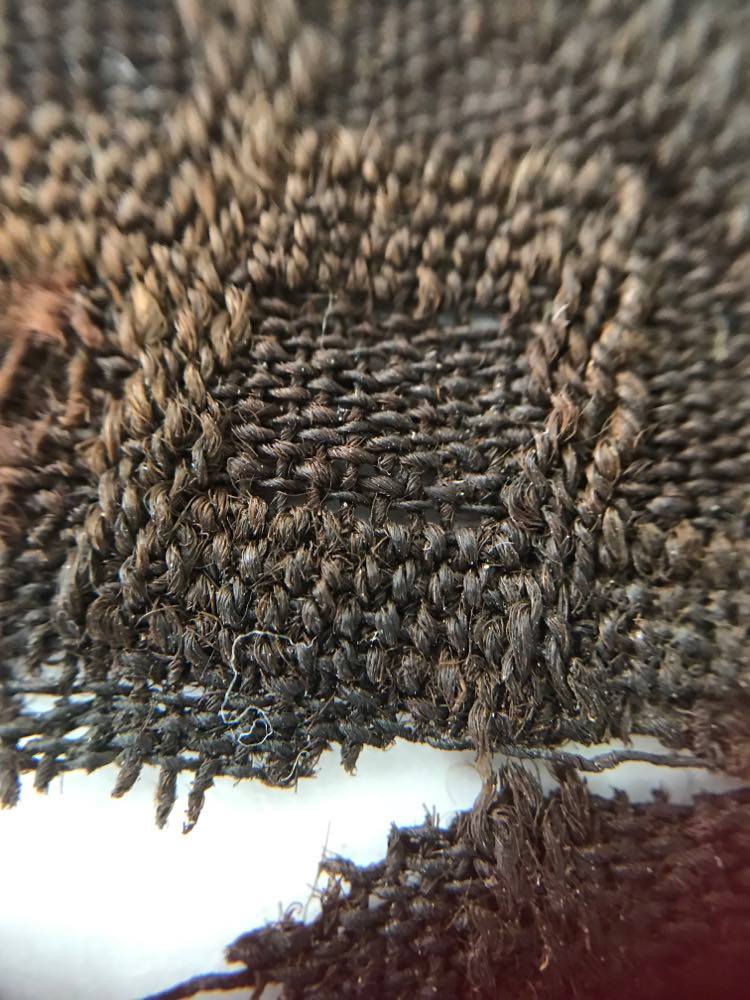Our fourteenth Advent calendar post 2021 is:
A the patterned part of a Danish wool textile. This is a textile find from Hvilehøj in Jutland. The bottom fabric is analyzed and is in a red color, the pigment is kermes. Although today it is mostly brown. But it can be seen that the patterned thread is of a different quality and of a different color. The bottom fabric is woven in plain weave and the pattern is picked. The pattern thread is originally assumed to have been white. It is 2-plied and the thread in the weave is a single in both warp and weft.
HERE you can read more about the entire reconstruction work done by researchers from the National Museum in Copenhagen. Scroll down in the text.
The fabric is dated 900AD.
With a 2-plied thin wool thread you could weave such lovely patterns. But you can off course also use it as warp in a tablet woven weave. Or as sewing thread. Or make embroideries with it. We love our white 2-plied thread since it’s strong and natural white and not bleached.
/ Amica and Maria
CC-by please cred us if sharing the pictures



























